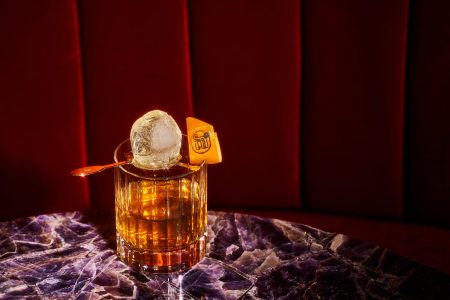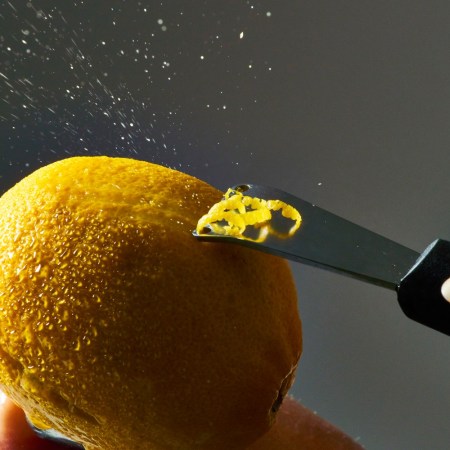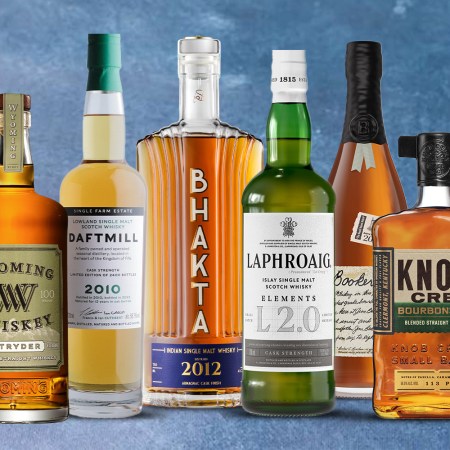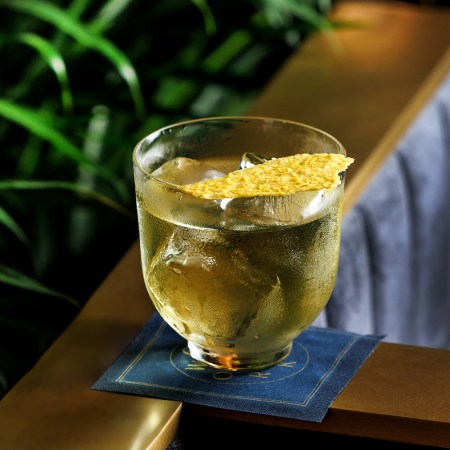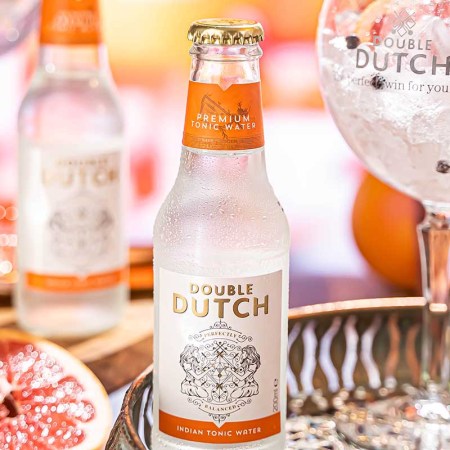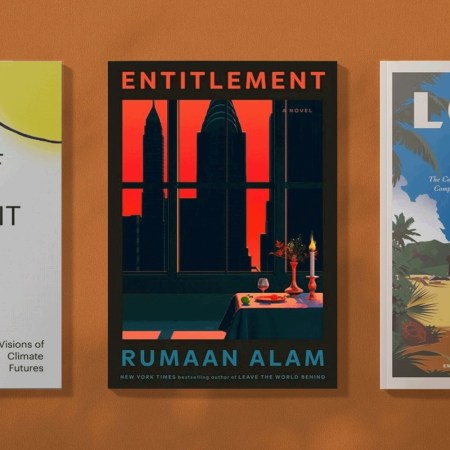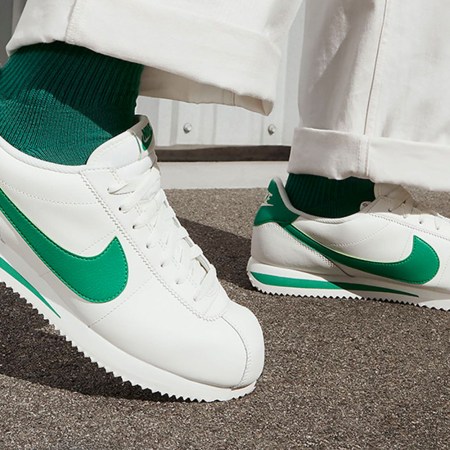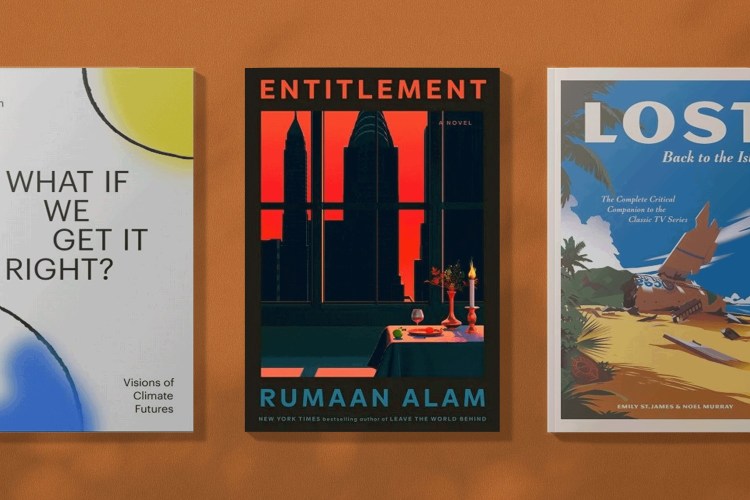At Bungalow, the new Manhattan hotspot from celebrity chef Vikas Khanna, you can sip a Paan Sour with paan chutney, a Gin and Tonic with amchur (an Indian spice made from dried green mangos) and the Lucky Cheng, made with green curry-infused gin, kewar and crispy green curry leaf. Without leaving Bungalow’s East Village neighborhood, you can pop into Jazba, where you’ll find a cocktail featuring Fernet-Branca infused with the Indian fruit kokum; another with mezcal, peepli pepper and curry leaf; and an Espresso Martini riff starring spiced chikmagalur coffee and liqueur made from kaapi, or Indian filter coffee.
In the last decade, Indian dining has evolved in the United States as Americans develop a better understanding of the cuisine’s vast and varied flavors. India has 28 states, after all, each with their own cooking traditions, and people outside of the country are realizing there’s more to Indian fare than chicken tikka masala. In New York City, restaurants like Bungalow and Semma have become some of the toughest reservations to snag, and spots such as Junoon, from the same team behind Jazba, remain some of the best loved and most influential eateries. But until very recently, the same expansive range of flavors and ingredients that brought food menus to life didn’t translate to the drink menu. Even the richest, most authentic Indian menus were under-served by beverages that didn’t reflect Indian flavors and ingredients. This is changing now, leading to more cohesive and exciting menus and new intriguing options for American imbibers to explore.
“Many Indian restaurants in America have traditionally focused on food rather than drinks,” says Sujan Sarkar, chef at Baar Baar, which has locations in New York and Los Angeles. “One of the primary reasons for the limited use of Indian flavors in cocktails has been the lack of knowledge and availability of authentic ingredients in the local market.” This, Sarkar explains, has made it challenging for bartenders to begin experimenting with Indian flavors, but that’s been changing as Indian spices, herbs, botanicals and produce become more accessible in American markets.
Alongside ingredients increasingly within reach is an authentic enthusiasm for and growing creativity around actually building out cocktail menus with the same focus that goes into dining menus. Those are relatively new factors in American Indian restaurants.
“[Western] Indian restaurants in the ‘70s and ‘80s were mostly run by immigrant families without experience in the professional hospitality industry,” says Jazba and Junoon beverage director and general manager Hemant Pathak. “They were restaurants run more out of a necessity to make a living. Then the British were the first to take Indian cuisine with them to the west and reinvent most of the dishes into those that are now popular worldwide.” These British restaurateurs, Pathak adds, perpetuated the “universal myth” that beer is what to pair with Indian food. Between that and a singular focus on food, cocktails weren’t even on restaurateurs’ radar until much more recently.

Restaurant owners, beverage directors and mixologists with better access to ingredients have a reason to finally devote real time, effort and resources to cocktail lists as the average diner’s palate matures. People want more variety and authentic cuisine reflecting more regions. This extends to cocktails, a world that continues to explode into new styles, riffs, flavor pathways and reference points every day.
“People are becoming more adventurous, and it’s a change visible in cocktails now,” says Sameer Bhatt, Bungalow’s general manager. “People aren’t afraid of trying different ingredients, things they’ve never had before. Especially in a city like New York where cocktail programs are mature and incredible, as restaurateurs, we also want to push ourselves to get more creative and move away from the usual ingredients and drinks.”
At Bungalow, Bhatt has leaned into highlighting the same spices diners find in the restaurant’s dishes in the restaurant’s drinks. “When we’re crafting a cocktail, we want to focus on one spice or ingredient that could really drive it, and then something fresh, like juice.” He cites a non-alcoholic drink at Bungalow called Falsa. “We use these Indian sherbet berries that we’d get in the summer in New Delhi where I grew up,” he adds. “It’s very nostalgic for people because this is a drink sold on the streets there. Bungalow is a nostalgic space — it’s designed to be like your grandmother’s bungalow…our drinks need to reflect stories, ingredients, techniques and flavors that connect back to memories and childhood.” Perfected with black salt, Falsa isn’t just an example of ties between the cocktail and food menus but also of the overall storytelling behind the restaurant.
Pathak shaped a cocktail program for Junoon when he joined the team in 2012. He says the restaurant already had “an amazing beverage program supplemented with 500 labels of wine…that was a treasure for me to work with.” Junoon had just implemented a concept of “spice mixology,” highlighting various Southeast Asian flavors with Indian spices, teas, fruits and herbs. The current menu is inspired by the Tree of Life (a framing of the banyan tree as a spiritual symbol in Hindu mythology), each drink paying tribute to the tree’s roots, stems, blossoms, leaves and fruits.
At Jazba, an overall theme pays homage to Indian roadside eateries called dhabas and their dishes that haven’t been as visible in American restaurants; the cocktails represent those flavors and their regions, named directly for their star ingredients. “This is an engaging way to share more context with our guests,” Pathak says. “Our menu lists cocktails on an illustrated map of India, relative to the regions their ingredients are from. We want to use these cocktails as a fun way to educate our guests, too.”
For a Fresh Take on Cocktails, Head to a Thai Restaurant
Inspired by the flavors of regional cuisines, these Thai restaurants are serving some of the most exciting drinks in the country right nowBaar Baar also utilizes cocktails as a storytelling device, “turning each drink into a cultural reference point,” Sarkar says. Their current menu pays homage to Bollywood, playing on connections between “creative storytelling and innovative mixology.” Baar Baar’s approach demonstrates there are two paths for Indian restaurants when molding their cocktail programs: updating classic staples and building beverages from scratch. For places like Baar Baar, taking drinks most imbibers are well acquainted with and reimagining them with Indian riffs provides an accessible entry point. People newer to these flavors are more likely to try them because they are at least familiar with the drink format. It’s a comfortable launchpad for flavor exploration. Take the Anarkali, a Negroni reinvigorated with cardamom and Darjeeling tea; the Mera Naam Joker, an Old Fashioned with ghee-washed bourbon and saffron syrup; Sholay, a Piña Colada twist with curry leaf-infused rum; and Hera Pheri, a Bloody Mary-inspired tipple with spicy guava chutney and pink salt.
In cities like New York with highly developed, eclectic cocktail scenes, people seek out restaurants and bars in the pursuit of trying new things and challenging their palates, so you’re often as likely to sell a guest on a totally new drink as you are an updated stalwart. We also see this in cities like Chicago, where Ayurveda-inspired cocktails at Rooh include the Queen of Spice with whiskey, papaya, persimmon, cardamom and mint. In Washington D.C., the drink menu at Rania features the likes of the Anaritha, made with banana-infused cachaça, tandoori-roasted and cumin-crusted pineapple, masala syrup, and citrus.
But classics with a twist are still the favored route for plenty of popular spots in cities known for their cocktails. Take Farzi in London, where there’s a Negroni with cardamom, a grapefruit Margarita with chaat masala and chili salt, and a sour with makrut leaves. This approach is also more of a necessity in places where the dining scene hasn’t quite caught up to the trend.
“In Portland, it’s not like places like New York City where restaurants are devoted to different [Indian] regions and people can get money, space and supporters for concepts,” says Deepak Khaul, owner of Bhuna in Oregon. “Here, we’re still seeing a lot of the same butter chicken, tikka masala. We’re actively working to get out of that mindset now, and while cocktails are behind in that conversation, it is happening.”
Khaul views cocktails as another piece of the educational process: they’re an area patrons must be walked through but are also a valuable tool for getting people familiar with Indian flavors and ingredients. Khaul focuses on tinkering with classics. The Bhuna Mule has turmeric and chili, the Old Fashioned incorporates masala-spiced demerara sugar and a Negroni brings in curry leaf and cardamom. There are also Gin and Tonics with masala, ginger and chilis. “We’re not going completely off the path here, but being in an Indian restaurant, we want to offer something a little different, something that’s recognizable but has an Indian twist to it,” he says.

The evolution of Indian-focused cocktails is exciting for diners and vital overall for the representation of the country’s rich, complex and varying cuisine. Cocktails offer a whole new field for restaurateurs to present flavors that tell stories and reflect different regions, and the resulting drinks are an engaging way to get people experiencing spices, herbs, botanicals and beyond in fresh formats. This also matters in terms of food-and-drink pairings. For so many cuisines, from Italian to French — and, more recently, Japanese and Thai — there are pairing options that reinforce the signature flavors of the food in the beverages. A flourishing of Indian cocktails means Indian cuisine isn’t limited to Eurocentric stand-bys on the drink menu.
In terms of what’s next in the growth of Indian cocktails, Sarkar says he’s seeing ingredients and techniques take root even outside of Indian restaurants. These elements could become the next trend in what’s inspiring bartenders and mixologists at influential drinking dens across the United States. He cites a blossoming interest in Feni, a strong Indian liquor made from cashew apples, as well as an increasing number of bartenders utilizing tandoors, or traditional clay ovens, to give cocktails smoky flavors.
“The fusion of Indian cuisine and cocktails has brought about a new wave of creativity in the world of mixology,” Sarkar says. “It showcases the diverse range of flavors and ingredients present in Indian cuisine, while also challenging bartenders to push boundaries and experiment with new techniques.”
For an approachable yet delicious and thoughtful way to begin experiencing these flavors at home, try mixing up Pathak’s Adraki Punch from Jazba’s menu.
Adraki Punch
Servings: 1
Ingredients
- 250 ml. ginger juice
- 250 ml. honey
- 2 oz. Figenza fig vodka
- .75 oz. freshly squeezed grapefruit juice
- .75 oz. lemon juice
- .5 oz. honey ginger syrup (recipe below)
- Small piece of candied ginger, for garnish
Directions
-
For the honey ginger syrup:
-
Add ginger juice and honey to a pan. Bring it to a boil, reduce heat and simmer for 3 minutes.
-
Store in a clean glass jar in the refrigerator. It should last for about 2 weeks.
-
-
For the cocktail:
-
Add the vodka, grapefruit juice, lemon juice and honey ginger syrup to a cocktail shaker with ice.
-
Shake and strain into a copper Mule mug over either pellet ice or one large ice cube.
-
Garnish with candied ginger.
-
Join America's Fastest Growing Spirits Newsletter THE SPILL. Unlock all the reviews, recipes and revelry — and get 15% off award-winning La Tierra de Acre Mezcal.

